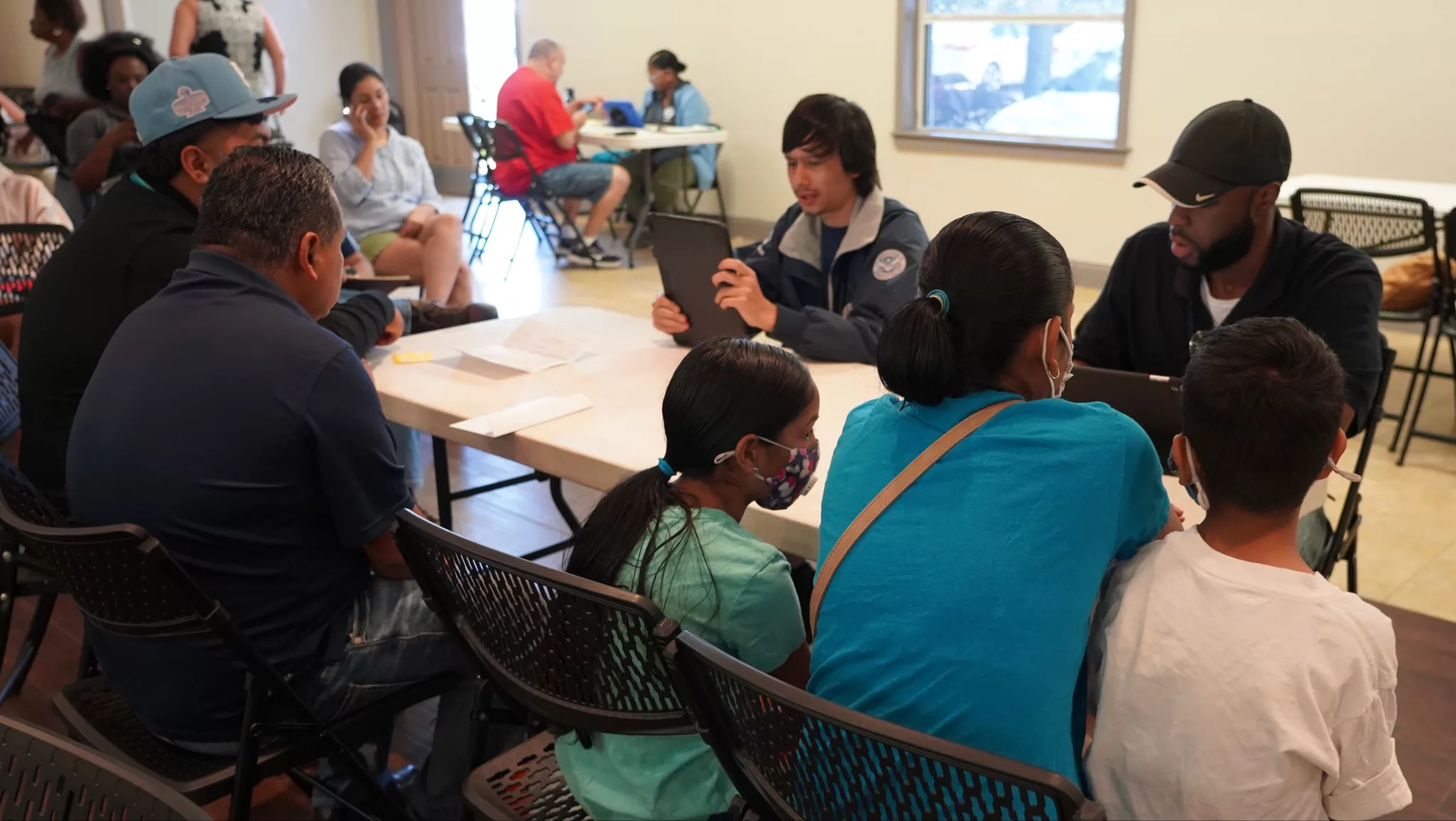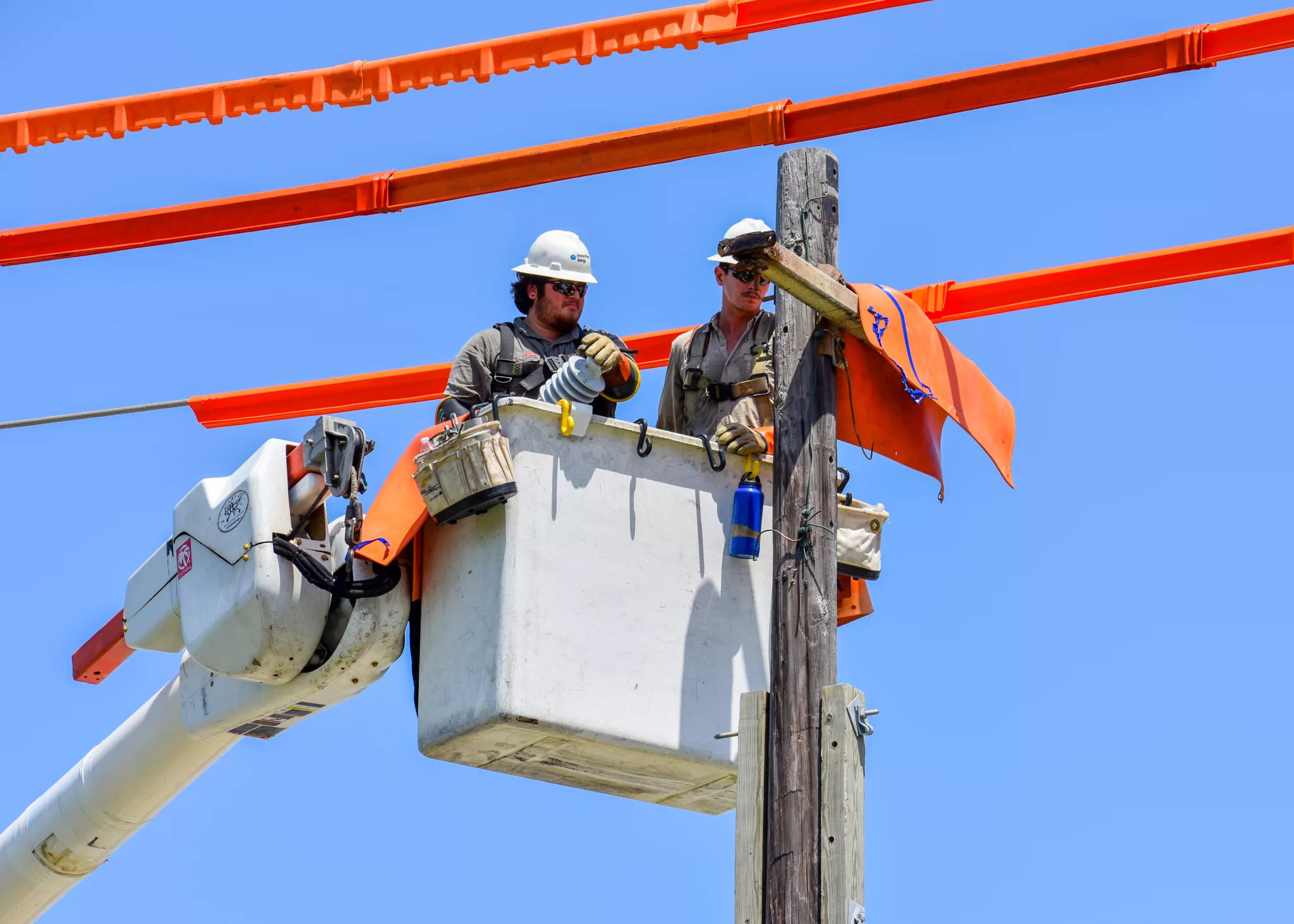Most recently published

Rising Above the Flood: A Decision Tool for Structural Safety
Cedric Ling, Debashish Kar, Nur Yazdani, Eyosias Beneberu, Maria Koliou and Yong Yoo
January 24, 2024
When homeowners choose to elevate their homes above flood levels, they may compromise the structural integrity of the building if the elevation method does not use the correct specifications. This new tool closes decision gaps that current guidelines and building codes do not address.

Weathering the Unknown: Inside Grant County Emergency Management
Tara Leigh Goode
January 24, 2024
When threatening weather approaches, communities must make tough decisions. Grant County, Minnesota, is building on its lessons learned to better prepare for future severe storms.

Beyond Patient Care: Family Reunification Planning for Hospitals
Michael Prasad
January 17, 2024
To meet a community’s mass care family reunification needs after a disaster, hospitals and other healthcare facilities must have plans and procedures in place for mass casualty incident response, which goes beyond patient care. Here are some recommendations for them to develop a collaborative strategic plan.

Multimodal Transportation Perspectives
Nathan DiPillo and Derek Kantar
January 17, 2024
Without transportation and communications, emergency response can move at an uncomfortably slow pace, enough so that life, property, and the environment may be unnecessarily compromised. The integrated transportation network must be protected from threats and other risks.

Resilience Versus Emergency Management
Wayne Bergeron
January 10, 2024
Conferences are full of important and interesting sessions, but attendees do not always take away actionable knowledge or have long-term retention of the information. This article summarizes a crowd-sourced conversation with panelists, attendees, resilience experts, and Chat GPT.

Energy Sector Perspectives
Eric Easton
January 10, 2024
From the alarm clock that wakes people in the morning, to the natural gas used to cook breakfast, to the refined petroleum products powering vehicles for daily commutes, the Energy Sector plays an integral role in daily life activities.

Publisher’s Message: 25 Years of Domestic Preparedness
Domestic Preparedness
November 13, 2023
As we celebrate the 25th anniversary, we honor the founding publisher, Marty Masiuk, and all the dedicated writers, advisors, and subscribers who contributed to and supported the publication over the years. Preparing for whatever the future holds requires remembering the past, setting new goals for the future, and evolving to

Emerging Technologies, Part 5 – Legal and Privacy Concerns
Ian Pleet
November 8, 2023
This is Part 5 of a five-part series on emerging technologies that can enhance the management of and response to future emergencies and disasters. This part focuses on the legal and privacy concerns with emerging technologies.

Looking Ahead at Increasingly Frequent Unpredictable Weather
Akshay Birla
November 8, 2023
Deadly blizzards and violent tornado outbreaks recently occurred in areas that do not typically experience these events. Preparedness and response technologies can help manage the onslaught of unique weather emergencies and severe climate conditions.

The Race to Interoperability
Charles J. Guddemi and Catherine L. Feinman
November 1, 2023
The Boston Marathon Bombing demonstrated the dedication, commitment, and strength of those who responded that day. The lessons learned from that event continue to strengthen community resilience as participants gather to focus on building interoperability within and between jurisdictions.

Emerging Technologies, Part 4 – Robotics and Automation
Ian Pleet
November 1, 2023
This is Part 4 of a five-part series on emerging technologies that can enhance the management of and response to future emergencies and disasters. This part focuses on robotics and automation for enhancing efficiency, safety, and effectiveness in crisis response and mitigation.

Technology: Can’t Live With It, Can’t Live Without It.
Catherine L. Feinman
October 25, 2023
The October edition of the Domestic Preparedness Journal takes a deeper dive into some of these considerations within national preparedness, critical infrastructure, and emerging technologies.

New Year’s Resolution – Stronger Communities
Catherine L. Feinman
January 31, 2024
For many, the first month of each year spurs a renewed energy for change and setting higher goals. This January, what New Year’s resolution would make your community stronger and more resilient?

Rising Above the Flood: A Decision Tool for Structural Safety
Cedric Ling, Debashish Kar, Nur Yazdani, Eyosias Beneberu, Maria Koliou and Yong Yoo
January 24, 2024
When homeowners choose to elevate their homes above flood levels, they may compromise the structural integrity of the building if the elevation method does not use the correct specifications. This new tool closes decision gaps that current guidelines and building codes do not address.

Weathering the Unknown: Inside Grant County Emergency Management
Tara Leigh Goode
January 24, 2024
When threatening weather approaches, communities must make tough decisions. Grant County, Minnesota, is building on its lessons learned to better prepare for future severe storms.

Beyond Patient Care: Family Reunification Planning for Hospitals
Michael Prasad
January 17, 2024
To meet a community’s mass care family reunification needs after a disaster, hospitals and other healthcare facilities must have plans and procedures in place for mass casualty incident response, which goes beyond patient care. Here are some recommendations for them to develop a collaborative strategic plan.

Multimodal Transportation Perspectives
Nathan DiPillo and Derek Kantar
January 17, 2024
Without transportation and communications, emergency response can move at an uncomfortably slow pace, enough so that life, property, and the environment may be unnecessarily compromised. The integrated transportation network must be protected from threats and other risks.

Resilience Versus Emergency Management
Wayne Bergeron
January 10, 2024
Conferences are full of important and interesting sessions, but attendees do not always take away actionable knowledge or have long-term retention of the information. This article summarizes a crowd-sourced conversation with panelists, attendees, resilience experts, and Chat GPT.

Energy Sector Perspectives
Eric Easton
January 10, 2024
From the alarm clock that wakes people in the morning, to the natural gas used to cook breakfast, to the refined petroleum products powering vehicles for daily commutes, the Energy Sector plays an integral role in daily life activities.

Publisher’s Message: 25 Years of Domestic Preparedness
Domestic Preparedness
November 13, 2023
As we celebrate the 25th anniversary, we honor the founding publisher, Marty Masiuk, and all the dedicated writers, advisors, and subscribers who contributed to and supported the publication over the years. Preparing for whatever the future holds requires remembering the past, setting new goals for the future, and evolving to

Emerging Technologies, Part 5 – Legal and Privacy Concerns
Ian Pleet
November 8, 2023
This is Part 5 of a five-part series on emerging technologies that can enhance the management of and response to future emergencies and disasters. This part focuses on the legal and privacy concerns with emerging technologies.

Looking Ahead at Increasingly Frequent Unpredictable Weather
Akshay Birla
November 8, 2023
Deadly blizzards and violent tornado outbreaks recently occurred in areas that do not typically experience these events. Preparedness and response technologies can help manage the onslaught of unique weather emergencies and severe climate conditions.

The Race to Interoperability
Charles J. Guddemi and Catherine L. Feinman
November 1, 2023
The Boston Marathon Bombing demonstrated the dedication, commitment, and strength of those who responded that day. The lessons learned from that event continue to strengthen community resilience as participants gather to focus on building interoperability within and between jurisdictions.

Emerging Technologies, Part 4 – Robotics and Automation
Ian Pleet
November 1, 2023
This is Part 4 of a five-part series on emerging technologies that can enhance the management of and response to future emergencies and disasters. This part focuses on robotics and automation for enhancing efficiency, safety, and effectiveness in crisis response and mitigation.
Emerging Technologies, Part 3 – AI and Machine Learning
Ian Pleet
October 25, 2023
In Part 3 of a five-part series on emerging technologies, the author focuses on the roles of artificial intelligence and machine learning in responding to emergencies. These transformative technologies are revolutionizing emergency management, humanitarian relief, and disaster response
Information Technology Sector Perspectives
Paul Galyen and Nathan DiPillo
October 18, 2023
The Information Technology Sector is one of 16 sectors identified as critical infrastructure under the Cybersecurity & Infrastructure Security Agency. Domestic Preparedness invited subject matter experts to answer questions about this sector, including how the sector and its interdependencies can affect any community.
Emerging Technologies, Part 2 – Uncrewed Vehicles
Ian Pleet
October 18, 2023
Part 2 of a five-part series on emerging technologies focuses on technologies designed to perform tasks and reduce human risk. Find out more about these autonomous or remotely controlled machines designed to perform tasks without human operators’ direct involvement.
Emerging Technologies, Part 1 – Information and Communication
Ian Pleet
October 10, 2023
This is Part 1 of a five-part series on emerging technologies that can enhance the management of and response to future emergencies and disasters. This part focuses on an all-hazards emergency management approach and information and communication technologies.
National Preparedness Efforts Among Tribal Communities
Lynda Zambrano and Catherine L. Feinman
October 9, 2023
Participants at the National Tribal Emergency Management Council’s annual conference in August shared some key takeaways for tribal and nontribal communities to improve their disaster preparedness efforts. Understanding the concerns and challenges is essential.
COVID-19 – Emergency Plans and Readiness Exercises
Rick Christ
October 4, 2023
During the COVID-19 pandemic, plans’ failures had little to do with the genomic sequence of the virus and more about what these plans were not: familiar, equitable and inclusive, interconnected and scalable, clear and actionable, and resilient.
Water and Wastewater Sector Perspectives
Elston Johnson
October 4, 2023
The Cybersecurity & Infrastructure Security Agency defines the Water and Wastewater Systems Sector as one of “16 critical infrastructure sectors.” Read about this sector’s numerous challenges in maintaining the high level of service necessary to the communities they serve.
Always Prepare for the Future, But Never Forget the Past
Catherine Feinman
September 27, 2023
This September edition of the Domestic Preparedness Journal addresses these and other key preparedness efforts that should be considered when planning for future incidents. Reflecting on the events of 9/11, consider the personal costs that emergency responders pay for serving their communities and develop mitigation strategies to reduce those costs.
Reducing Workplace Violence in Healthcare Facilities
Corina Solé Brito
September 27, 2023
Violence in healthcare facilities significantly challenges patients, providers, support staff, visitors, and first responders. However, healthcare-specific information and tools can help protect staff, patients, and others in these facilities.
Planning for A Cross-Country Special Event
Mark Howell and Laurel J. Radow
September 27, 2023
A solar eclipse is a unique form of special event that does not always fall under emergency planning protocols, but it should. This article urges preparedness professionals to collaborate with eclipse planning committees to ensure the safety and security of all those involved.
Cybersecurity in Hospitals and the Public Health Sector
Dan Scherr and Tanya M. Scherr
September 20, 2023
Cyberattacks on healthcare systems affect millions of patients each year. It is critical for agencies and organizations to build a culture of compliance and awareness for the system’s security and the safety of the patients.
Beyond Registries: Better Solutions for People With Disabilities
June Isaacson Kailes
September 20, 2023
Emergency planners often identify volunteer disaster registries as a solution for assisting people with disabilities during a disaster. However, registries have flaws. Learn about eight common registry problems and the author’s better solutions that should be considered.
Follow Us
Get Instant Access
Subscribe today to Domestic Preparedness and get real-world insights for safer communities.


